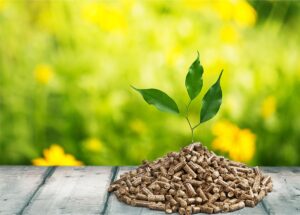Biomass and electricity could help paper mills achieve net zero, study finds

The research, published in the Journal of Cleaner Production, examined how decarbonisation could be achieved across different types of mills.
Researchers modelled four categories of mills, defined by whether they use virgin or recycled fibres, and whether they are integrated or not.
Integrated mills produce pulp and paper from raw wood on-site, while non-integrated mills rely on pulp processed elsewhere.
Virgin mills use fresh wood, whereas recycled mills use previously processed fibres.
“Previous research often looked at a single mill type or product,” said Lokendra Pal, co-author and professor at North Carolina State University. “By modelling the entire mill for all four categories, we can better understand operational trade-offs and interdependencies.”
Virgin integrated mills contribute 30% of US paper production and 33% of the industry’s greenhouse gas emissions, making them the largest contributors.
Although these mills already generate 80–90% of their energy from on-site waste wood, they typically use natural gas boilers to supply the remainder.
Non-integrated mills, by contrast, depend entirely on purchased electricity and natural gas for heating and drying.
The study found that converting to electric-powered boilers could cut emissions by up to 61%, potentially bringing these mills to net zero - provided electricity production itself is decarbonised.
“The US electric grid is expected to increase its share of clean and renewable energy by 2050,” Pal said. “Boilers powered by this electricity could be far cleaner than those running on natural gas, opening a path to net zero emissions.”
The team also explored energy-saving measures during the papermaking process, particularly in dewatering before thermal drying.
Thermal drying, where wet paper is passed over steam-heated cylinders, is the most energy-intensive stage.
Techniques such as enzymatic treatments and mechanical presses can remove more water beforehand, improving overall energy efficiency.
“Every 1% of water removed prior to drying improved total energy efficiency by around 3%,” said Maria E. González, lead author and PhD student at NC State.
“However, this reduces steam production for turbines, so mills must balance energy savings with energy generation.”
Finally, researchers assessed low-carbon fuel options, such as replacing fossil fuels with waste wood in boilers.
Integrated mills saw significant emission reductions from substituting biomass, especially when electricity costs were higher than natural gas.
Biomass could also supplement turbine-generated steam, providing both decarbonisation and energy security. Depending on the extent of fossil fuel replacement, emissions fell by 24–48% using biomass alone.
“Combining electrification, energy efficiency and biomass use gives mills multiple pathways to reduce emissions,” Pal said.
“There is no single solution; each mill must tailor strategies to its operations. This integrated approach could significantly enhance the sustainability and competitiveness of the US pulp and paper sector.”















